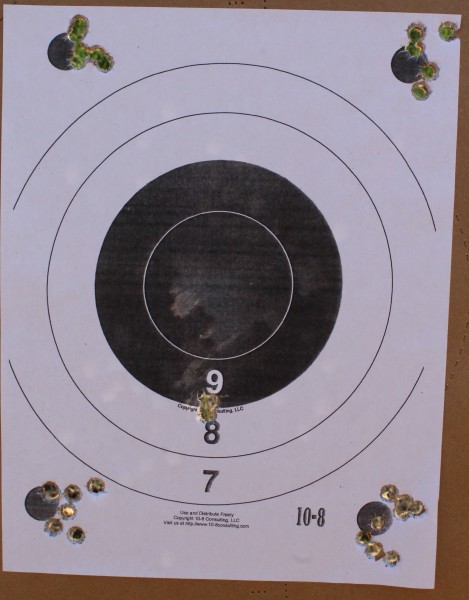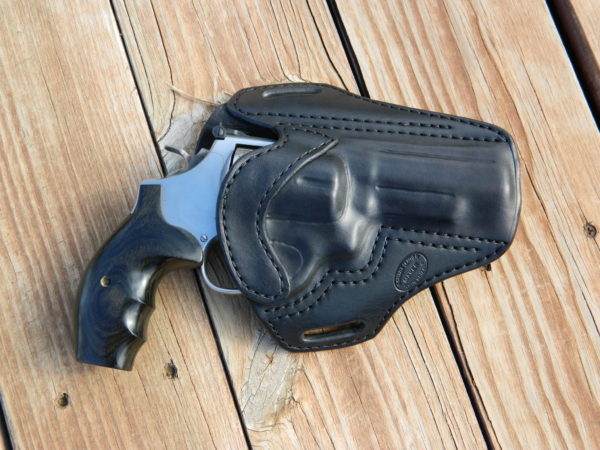 In the training industry, we tend to complain about folks who spend too much of their money on guns and gear rather than ammunition and training. That idea is sound and is aimed at those folks who rarely, if ever, attend classes or practice defensive skills. There are a lot of inhibiting factors which keep us from enrolling in quality classes. Tuition is generally about $225 per day and about a grand per week. Continue reading
In the training industry, we tend to complain about folks who spend too much of their money on guns and gear rather than ammunition and training. That idea is sound and is aimed at those folks who rarely, if ever, attend classes or practice defensive skills. There are a lot of inhibiting factors which keep us from enrolling in quality classes. Tuition is generally about $225 per day and about a grand per week. Continue reading
Author Archives: Warren Wilson
The Great Teacher Inspires
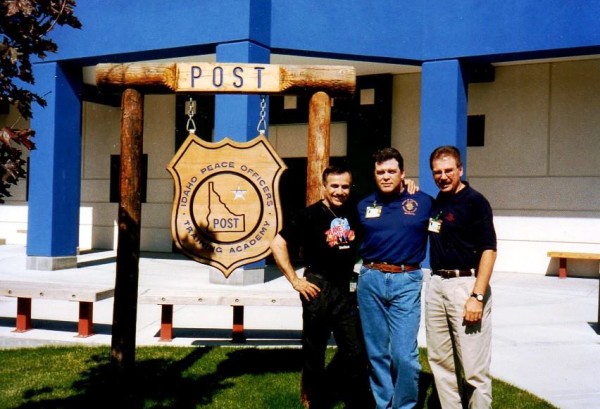
Some Years Ago at the American Society of Law Enforcement Trainers Conference in Idaho. Vince in the middle.
“The mediocre teacher tells. The good teacher explains. The superior teacher demonstrates. The great teacher inspires.” -William Arthur Ward
Vince O’Neill is one of the premier law enforcement instructors in the country. He has trained cops in firearms and defensive tactics for over 30 years in every state of the union and 29 countries. O’Neill has been the lead instructor in both of these disciplines for Oklahoma’s Council on Law Enforcement Educators and Trainers. Listing Vince’s training and qualifications would require a separate article in itself. He is qualified as an expert witness on uses of force in state and federal court. He is a former state PPC champion, NRA High Master, NRA 1490 Combat Club member as well as many international instructional certifications in firearms and less lethal applications. His copious training, impressive wealth of real world experience and teaching prowess give him the ability to effectively relate information to students in a way that few others can. Continue reading
Smith & Wesson M&P40L Performance Center
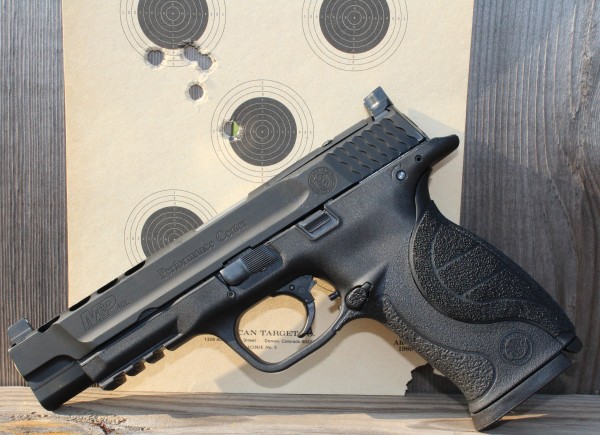
I bought my first Smith & Wesson M&P autopistol in 2008 and currently have five of them excluding the M&P40c my wife hijacked some years ago. I carried that original M&P40 on regular duty and SWAT for several years. However, Smith & Wesson just wasn’t satisfied with a good thing. After the standard duty size models became successful, then the compacts were introduced. The Competition Optics Ready Equipment (CORE) models represent another step forward for the M&P line. They allow for the mounting of optics on the standard and longer slide models. Most recently, the long slide versions hit the market. But, it doesn’t stop there. The S&W Performance Center makes both functional and aesthetic enhancements to otherwise stock handguns. So, the natural next step in the evolution of the M&P is the Performance Center line of pistols. Continue reading
Shop With Mom and Pop: Hometown Holster Makers
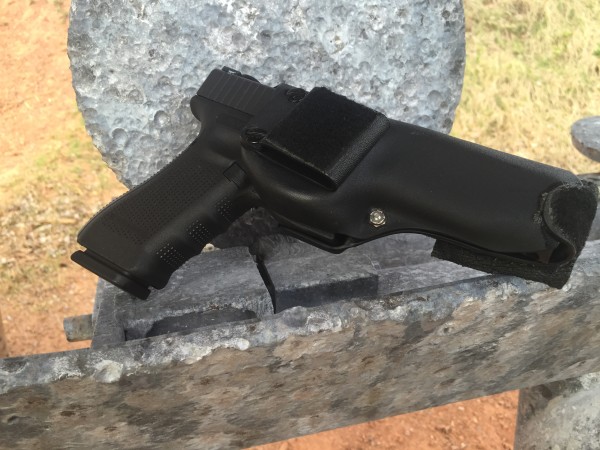
Spencer of “Spencer’s Keepers” carries a Glock 35 AIWB in his patented “Keeper.”
Back in my early days of carrying a gun, I bought some holsters with the structural integrity of a Dandelion. I’ve since learned that acquiring decent gear generally means making a decent investment. Production holsters are readily available, but the good ones are costly. Quality custom gear is even more so, with a few exceptions. If you want to save a couple of bucks and still get the customer service and quality products you deserve, check out the small custom shops. Below are four, “Mom and Pops” that I have used and which I recommend without hesitation. (Look for links throughout the article.)
A Year Long Experiment with a Pistol Optic
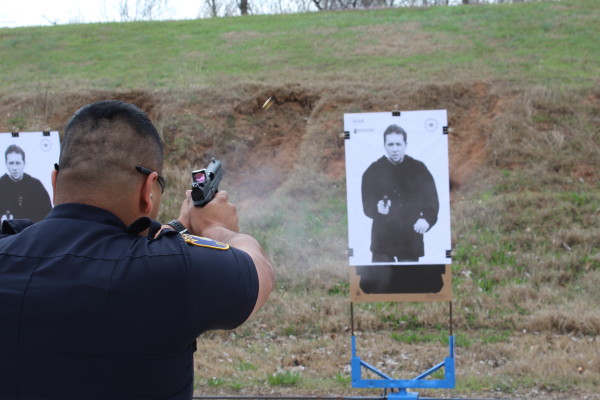
Norman Police Department Officer Ali Jaffery fires “2 and 1” failure drills with the CORE/RMR combination.
“That’s the future…right there.” My friend, Steve Tracy, may have been right as he pointed down at the M&P CORE pistol mounted with a Trijicon RMR at SHOT Show 2014. There is a relatively small but growing contingent of defensive pistol experts who believe that reflex sight optics will find a home atop law enforcement duty pistols in the near future. After all, optics are almost omnipresent on police carbines. While formerly considered an aid for competition guns, the quality of these devices has risen to the level that many feel they can trust them for defensive use. How does one measure just how much, if any, advantage can be gained by an optic over traditional sights in a defensive set up? I just happened to have an M&P40 that I used on patrol and in SWAT for several years. Smith & Wesson and Trijicon were kind enough to send me a pistol and optic for evaluation. Continue reading
Rangemaster Instructor Development
Quote
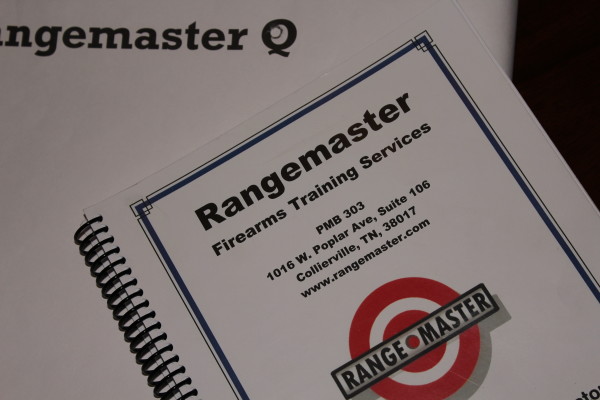
A .38 caliber hole fired by Tom Givens from a revolver held upside down in a demonstration.
“Evil is real,” he said somberly, and he would know. With decades of law enforcement experience in the Memphis area, specialized security work and dedicated research on the topic of armed self-defense, Tom Givens does know. He’s an exceptionally experienced firearms instructor, author, competitor and student. He is a longtime member of the American Society of Law Enforcement Trainers, the National Law Enforcement Trainers Association, the International Wound Ballistics Association and the International Association of Law Enforcement Firearms Instructors. As IDPA member number A00008, Tom was there during the creation of that organization and was among the first members of The Police Marksman Association. Givens has investigated a staggering number of shootings over the last four decades, including dozens involving his own students. With that knowledge and experience, Tom has served as an expert witness on firearms and police training on the state and federal level. Tom has authored four books including his most recent, Fighting Smarter. He and his wife, Lynn own Rangemaster Firearms Training Services. In the firearms training community, Tom is nothing less than a legend. Lynn is quite the shooter and instructor in her own right. Each year, Rangemaster hosts The Tactical Conference. That event culminates in a realistic shooting competition. Lynn placed third in the 2015 match against some heavy hitters. Underneath her kind, unassuming exterior is the blue twisted steel of a gunfighter. I jumped at the opportunity to attend their three day Firearms Instructor Development class. Here are my thoughts.
Smith & Wesson 642 Performance Center Talo
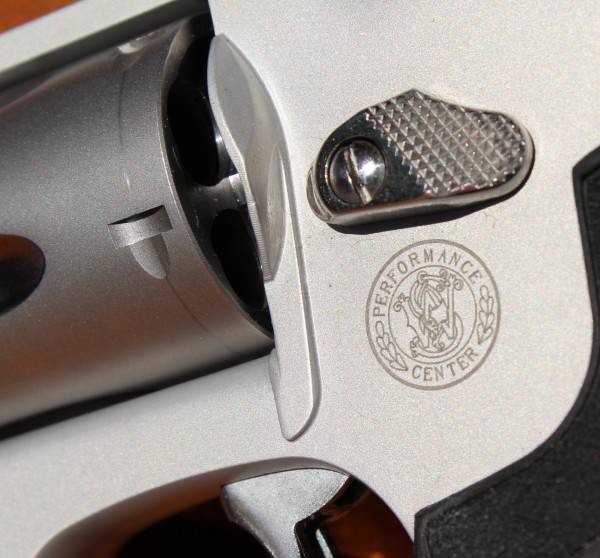 The J-frame Smith & Wesson revolver is a must-have carry gun in my book. I’ve been carrying a model 642 as a backup both on and off duty for almost fifteen years now. There are a lot of nifty little auto pistols on the market today, but none of them come out of the front pocket quite as readily an internal hammer J-frame. Of course, there are drawbacks to everything. If you want a quality, 15-ounce pocket gun, sacrifices must be made. As is necessary for reliable ignition, the DAO trigger pull on these little revolvers is heavy and that makes them somewhat more difficult to shoot. For the sake of concealability, the stocks are tiny and even the rubber ones are hard on larger hands like mine when firing +P loads. Another negative of small .38 Special revolvers is occasionally sticky extraction of spent brass. This is especially true when using the hotter defensive rounds. These guns have been popular for so many decades, I think it’s safe to say that defensive handgunners have readily accepted these seemingly necessary compromises. Maybe we don’t have to compromise as much anymore. Continue reading
The J-frame Smith & Wesson revolver is a must-have carry gun in my book. I’ve been carrying a model 642 as a backup both on and off duty for almost fifteen years now. There are a lot of nifty little auto pistols on the market today, but none of them come out of the front pocket quite as readily an internal hammer J-frame. Of course, there are drawbacks to everything. If you want a quality, 15-ounce pocket gun, sacrifices must be made. As is necessary for reliable ignition, the DAO trigger pull on these little revolvers is heavy and that makes them somewhat more difficult to shoot. For the sake of concealability, the stocks are tiny and even the rubber ones are hard on larger hands like mine when firing +P loads. Another negative of small .38 Special revolvers is occasionally sticky extraction of spent brass. This is especially true when using the hotter defensive rounds. These guns have been popular for so many decades, I think it’s safe to say that defensive handgunners have readily accepted these seemingly necessary compromises. Maybe we don’t have to compromise as much anymore. Continue reading
Operation Specific Training: Practical Fundamentals
 “You need a maximum strength prescription of ‘slow…down’. Speed comes later,” he said in that western Kentucky accent that almost forces a sense of calm. It was obvious this would be a different kind of class. Operation Specific Training offers a process-oriented curriculum as opposed to a goal-oriented curriculum. I would come to know what that meant over the next two days.
“You need a maximum strength prescription of ‘slow…down’. Speed comes later,” he said in that western Kentucky accent that almost forces a sense of calm. It was obvious this would be a different kind of class. Operation Specific Training offers a process-oriented curriculum as opposed to a goal-oriented curriculum. I would come to know what that meant over the next two days.
I had Internet-known Jerry Jones, the President of Operation Specific Training, for several years at that point. (Editor’s Note: We are proud to have Jerry here as a regular contributor here at Modern Service Weapons.) We had corresponded regularly on a forum and via email, but had never met in person. I’d always found him to be exceptionally knowledgeable and truly interested in the education of others. He’s notorious for going to great lengths to answer questions and provide assistance to perfect strangers online. During an email exchange, I told Jerry I was having trouble with some fundamentals after surgery. I don’t know if Jerry felt sorry for me or was just tired of reading my polysyllabic swearing, but he invited me to his Practical Fundamentals class in Paducah, KY. It seemed like a perfect opportunity to regain some skill and maybe a little swagger. Continue reading
Out Where The West Begins: A Deputy and His R8
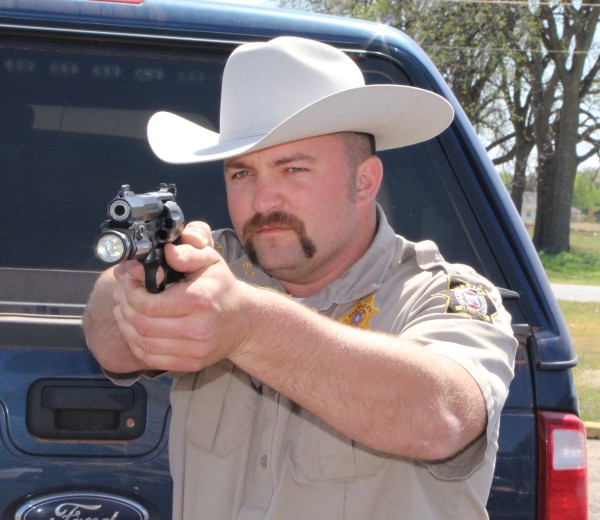
“I think I’ll do okay,” he told me with a slowly-developing wry smile under a horseshoe mustache (not to be confused with a Fu Manchu) and an immaculate platinum four-inch brim Serratelli western hat. I always wondered how he kept that thing so clean patrolling our infamous red dirt roads. In retrospect, I had probably come across a little incredulous as to Garfield County Deputy Cory Rink’s choice of new duty pistol while we were discussing the dynamics of modern law enforcement shootings, split times, reloading speed and accuracy. Rink is a unique fellow. He’s intelligent, excellent with the public, well-versed in statute and case law, a custody/control (hand-to-hand) expert and has thrown more than a few hay bales in his life. So, of course, he chose a unique duty gun; a S&W M&P R8. But, still… a revolver? In the 21st century? He seemed confident that he’d do just fine on the range. We’d see soon enough. Continue reading
The Old Fat Dog and the Curly Wolf
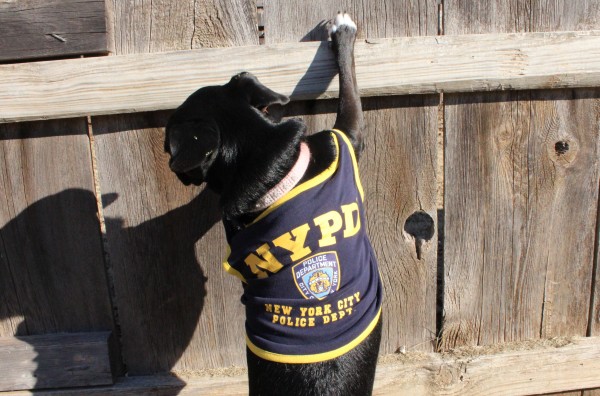 I often caution citizens not to expect their domestic pets to be effective guard dogs. Folks usually don’t like heavring it, but that’s been my experience after a few decades in law enforcement. Dogs are great alarm systems if properly programed, but are rarely capable of a full-blown attack against a dedicated assailant. I can’t tell you how many times I’ve gained permission to enter a fenced-in yard to search for a suspect only to be told by the homeowner that no one could survive their killer canine’s zone of terror. One gentlemen even told me, “if he’s back there, you’re on a recovery mission [rather than a rescue mission].” Several of those times, not only did we find the suspect in Cujo’s Corner but one time (I kid you negative), the felon was actually hiding in the dog house. Still, police work is consistent with anomalies. Continue reading
I often caution citizens not to expect their domestic pets to be effective guard dogs. Folks usually don’t like heavring it, but that’s been my experience after a few decades in law enforcement. Dogs are great alarm systems if properly programed, but are rarely capable of a full-blown attack against a dedicated assailant. I can’t tell you how many times I’ve gained permission to enter a fenced-in yard to search for a suspect only to be told by the homeowner that no one could survive their killer canine’s zone of terror. One gentlemen even told me, “if he’s back there, you’re on a recovery mission [rather than a rescue mission].” Several of those times, not only did we find the suspect in Cujo’s Corner but one time (I kid you negative), the felon was actually hiding in the dog house. Still, police work is consistent with anomalies. Continue reading
A Fracture Well Cured: Coming Back from Injury
A score of eighty-eight percent on our state’s generous law enforcement qualification course is not acceptable in my book. It had been my first attempt that year just over three months out of my second surgery. I can hardly remember a time when I didn’t shoot a perfect or near perfect score on a qualification round. In a nine-month period, I’d had Ulnar nerve surgery on my left elbow and triple surgery on my right shoulder. It’s hard to say which is more responsible for the lengthy recovery time: the injuries and subsequent surgeries themselves or the years of procrastination. Either way, my days of being useful as a real cop were seemingly over.
Physical atrophy is to be expected after a joint surgery (and even in my prime, I was more slight than might), but the real problem for me was the subsequent emotional atrophy. I was under doctor’s orders not to do even a single push-up for at least a year. That meant an automatic failure of the SWAT team’s mandatory P.T. test. I was a team leader and was forced to resign several years before I had planned. At about the same time, I was removed from my primary position as a shift commander and put in an administrative/supervisory role over non-sworn personnel. The cumulative effects of these life changes were devastating beyond physicality. Continue reading
The Modern Firearms Instructor: Can We Do Better?
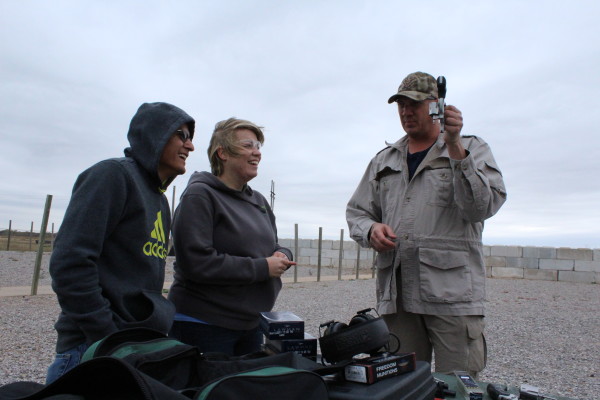
Firearms instructors have a golden opportunity when teaching concealed carry classes to encourage their students to seek further training.
It seems everyone is a firearms instructor these days, me included. As the interest in firearms ownership and concealed carry grow, so must the instructor base. We are law enforcement, military and private sector firearms enthusiasts who want to share our knowledge and help others. Most firearms instructors only teach their state’s concealed carry course or other “basic” classes and I’m certain the majority of us do a respectable job with the short amount of time we are allotted. Still, can we do better? I believe there are two areas where many firearms instructors just plain fail.
The majority of new shooters or at least new students only attend their first class because their respective states require it to attain a handgun carry license. I would dare say many of them are certain that this rudimentary training is more than adequate. That’s not their fault. That’s our fault as instructors. An eight-hour, state-mandated safety class is in no way sufficient and that is a point where I feel many instructors fail. We should be encouraging our students to seek further training on their own after completion of that class. Granted, it can be difficult for your average person to overcome their fears and finances to attend even a basic eight-hour class. How do we convince those folks to attend intermediate and advanced training? It all starts with that concealed carry class. Continue reading



